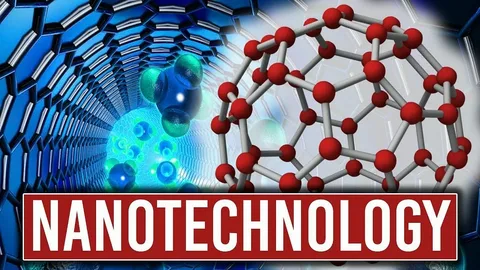Injecting nanotechnology in bloodstream will make humans immortal by 2030, says Ray Kurzweil, an author, Google futurist, and author.
Nanotechnology can be used in various ways, but one of its popular implications that is being considered is injecting it into the bloodstream of a human body in the form of nanobots or nanoparticles to cure various diseases. Experts say that by using the nanotechnology in blood, you allow it to travel in your body and keep yourself safe from various diseases, including cancer, and also extend your overall life expectancy.
Keep reading to know what nanotechnology is and how it enhances your blood.
Table of Contents
What Exactly Is Nanotechnology?
In simple terms, nanotechnology is one of the emerging fields of science focused on building small-sized robots measuring between 0.1 to 10 micrometers. They are generally made of molecule components.
The idea of Nanotechnology was first proposed in December 1959 by Nobel laureate Richard Fireman. When he was giving a lecture at Caltech named “There’s a Plenty Of Room At The Bottom,” he discussed the possibility that in the future, scientists could manipulate individual atoms, allowing the development of tiny technology that can be used to enhance overall human health.
Now, the development of nanotechnology is on the rise and has so much potential that experts expect it to revolutionize many industries, for example, transportation, energy, food safety, medicine, information technology, etc.
Implementation Of Nanoparticles In Blood
Nanotechnology can be inserted into your body through nanorobots or nanoparticles. Nanoparticles in blood navigate through your body in many ways, and it majorly depends on the purpose for which the nanobots are built.
For instance, nanoparticles in blood can be used to deliver drugs to a patient’s body with high accuracy. It assists in injecting the microdoses into the body exactly where it is needed, which directly helps heal the disease and prevent various side effects. Some nanobots can also be specifically built to kill the cancer cells in the body.
Nanoparticles can also be programmed in a way that allows them to self-replicate and create multiple copies of themselves to cover more ground in the body. This feature of nanotechnology can help treat illnesses affecting more than one body area.
Nanotechnology in blood can be used as an artificial blood substitute to prevent the problems that blood transfusion brings. Scientists are considering this approach to develop complex systems of artificial red blood cells that can replace the real blood in your body.
Nanoparticles in blood can also be programmed to communicate with each other to share information about tasks, goals, and locations to achieve their objectives more efficiently.
What Are Some Risks Associated With Nanotechnology?
A few risks associated with nanotechnology also need to be addressed. For example, when doctors implement nanotechnology in bloodstream, various complications can occur, like increased inflammation, reduced immune response, and tissue damage.
Another of the main risks of using nanotechnology in blood is the exploitation of data security and patients’ privacy. The use of nanobots in the body generally involves patients’ personal and medical information, which might be at risk of leakage. Hence, robust security measures should be taken to prevent the misuse of the patient’s information.
Some cybersecurity experts have also confessed that using nanotechnology in blood can lead to potential cyber threats like hacking, as they are usually controlled by a program using an electronic device.
Some experts also say that if an individual has more than one nanoparticle in their body, a hacker can turn them into a network and use the system of the body to do their bidding. Due to that, many people are concerned that this technology can be easily used as a weapon in the future.
What Is The Future Of Nanotechnology?
The future of nanotechnology seems bright as various private companies and governments support it. Many famous scientists have an optimistic approach toward this technology, expecting it to transform the medical and many other industries positively. It is also worth knowing that nanotechnology has received funding of $4 billion globally.
However, besides all these things, we cannot ignore the challenges and limitations that still require work. Some researchers say that it will take around ten years to overcome these challenges and begin the implementation of nanotechnology in bloodstream.
So, most scientists and researchers have a positive attitude toward this technology. However, it is yet to see how our scientists navigate the complexities and begin to utilize nanotechnology in medicine successfully.
Final Thoughts
Implementation of nanotechnology in bloodstream can revolutionize the healthcare industry. The way scientists have been working on it to advance the medical sector is quite impressive.
It is expected that nanotechnology in medicine will probably be available in the next 5 to 10 years. However, assessing the current situation, a lot of work still needs to be done to overcome the limitations and various risks of nanotechnology for its seamless implication to help humanity live a long and healthy life.
















